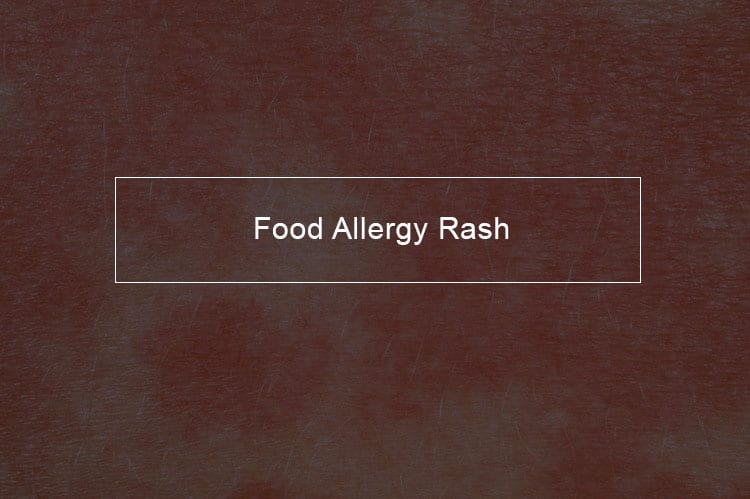
Whenever you get a skin rash on some part of your body, you find yourself thinking; Is it serious? Should visit a doctor? When will it go away? This article can help you get the answers to your questions.
Will a rash go away on its own?
Does a rash go away on its own
A rash is an area of irritated or swollen skin. While there are many causes of a rash, some rashes indicate a more serious skin infection such as ringworm. In most cases, rashes are left untreated to clear on their own. The rash will likely clear up without complications in two to three weeks as long as the person is not re-exposed to the allergen. To know if a rash is clearing up, looking for signs will be essential. So let's get started and see the signs of skin rashes.
Type of skin rashes and their signs
Signs and symptoms of rashes vary depending on the cause of the rash. The following are the most common:
Bites and Sting skin rash
A bite or a sting by an insect can cause a rash. Even though the reaction will vary depending on the insect and the person, the following are general signs:
- Swelling on the area of the bite
- Redness and rash
- Feeling the pain and itchy
Flea bites skin rash
Fleas are tiny jumping insects that live in fabrics at home.
- A flea bite on human looks like a red spot
- A flea bite makes the skin irritated and painful
- Scratching a flea bite rash can result in secondary infections
Fifth skin rash
It is an infectious skin disease which is caused by virus B9. The rash has three main signs:
- A blotchy red patch on the cheeks with multiples or red pimples
- A net of red might appear on the arms and trunks after four days on infection
- The rash might appear only after exposure to the sunlight or heat
Impetigo skin rash
Impetigo is an exceptionally infectious skin infection that mostly affects children.
- The early sign of a rash is a patch of red, itchy skin.
- There are two types of impetigo and have different signs.
- Non-bullous impetigo-appears as red sores around the mouth and nose.
- Bullous impetigo- It is not common and generally affects children under two years. Blisters medium to large form on arms, trunk, and legs.
Shingles skin rash signs
The same virus causes shingles skin rash as chickenpox. The symptoms of the rash include:
- Irritating and painful feeling
- Blisters can form a solid red band
- A rash similar to chickenpox can develop in a band around the infected nerve.
Scabies rash signs
A microscopic mite causes scabies. The rash is very contagious and spreads quickly from one person to another. Symptoms include:
- Intense itching-frequently worse at night
- Blisters might form.
- The rash appears in lines as mite burrows.
- If a scabies rash is scratched, sores might appear.
Eczema skin rash signs
This is one of the most common skin rash condition. It is more common in children. Signs vary depending on the type of eczema and the age of the child, but often include:
- Intensely itchy rash
- Cracked and rough skin
- Dry, scaly spots on the skin
Hay fever skin rash
Hay fever is as a result of an allergic reaction to pollen grains. Hay fever signs are similar to those of common cold:
- Runny nose and watery eyes
- Sneezing
- A rash similar to that of hives
- The appearance of red itchy patches on the skin
Scarlet fever skin rash
Scarlet fever is caused by the same bacteria that causes strep throat. The rash has the following symptoms:
- Red blotches
- Blotches turn to fine pine-red rash like sunburn
- Skin feels rough
Signs of Heat rash
Heat rash occurs when the skin sweat glands are blocked and sweat produced cannot get out of the skin and evaporate. This causes swelling which results in a rash. Common signs of heat rash include:
- Red swellings on the skin and itchy feeling on the skin.
- The rash appears as reddened skin with small blisters as a result of inflammation. It frequently occurs in skin creases or areas of tight clothing where air cannot circulate.
- Heat rash can fade away temporarily when the skin is allowed to cool.
- The signs of heat rash are the same in infants and adults; but since children cannot complain about rash feeling, he or she may be fussy.
Should I avoid the sun until my heat rash is cured?
If your skin is already sensitive, exposure to ultraviolet rays and possible sunburn could cause you more discomfort. Take control of the problem by covering up and minimizing your time in direct sunlight. Besides, some types of skin can be caused by the sun; dermatitis forms when your skin has a response to an irritant or allergen after exposure to the sun. Triggers of such a reaction include; sunscreen, cosmetics, perfume and shaving lotion. Visit a physician to assess the cause of your skin reaction and the best treatment.
Stress rash
One of the areas where stress may affect is on a person's skin. Stress can affect the skin in various ways. Specifically, a stress rash may cause feelings of unhappiness. This may indicate an individual's stress and worsen the rash further. Stress rash may sometimes cover the entire body or be accompanied by
- Skin peeling or blisters
- Fever
- Pain
Allergy rash
There are various types of skin allergies most of which have been discussed above such as hives, and eczema. Contact dermatitis occurs as a result of exposure to an allergen. Presuming that you have red itchy bumps on your skin, specifically at the site of contact with some potential irritant, you may be experiencing contact dermatitis.

Could a food allergy cause a skin rash?
Yes, a response to a food allergen can cause you to have skin reactions such as hives. Nevertheless, there are many possible causes for hives and rashes, so consult with your doctor to determine the cause of your signs and the best course of treatment.
When should you be worried about a rash?
How to tell if a skin rash needs medical attention?
To the untrained eye, all rashes might appear easily treatable with both home and over the oral counter medications. But, it is not the case. Rashes might look like blotches or blisters; the rash might be red, itchy, scaly, or dry; and they can develop in one area of skin or all over the body. Besides some doctors say rashes may come and go, while others may never go away.
Most of the skin rashes are not life-threatening. However, some can depict something serious. Since rashes can have many causes, if you have concerns, the best way to diagnose a rash is to see a doctor for an assessment. If you have a rash and see any of the following signs visit a doctor.
- If your rash covers all your body, it could indicate something worrying, such as an infection or allergic reaction.
- If you have a fever with a rash, visit a doctor. An allergic reaction or an infection could cause fever, examples of rashes caused by infection include scarlet fever, measles, and shingles.
- A rash which is sudden and spreads rapidly requires medical attention. This could be a result of an allergy; allergies to medications are common, and some might be dangerous. If you develop difficulty in breathing contact a doctor urgently.
- Rash that starts to blister might be severe. If your rash is comprised of blisters, or if the rash becomes open sores, it could be caused by an allergic reaction, a reaction to a medication, or an internal cause.
- Get medication if a blistering rash affects the skin around your eyes, many areas in your mouth or your genitals.
- If your rash is painful, have it evaluated by a physician.
- If scratch an itchy rash, it might become infected. Symptoms of an infected rash are yellow or green discharge, bumps, crusting, pain, and itchiness in the region of the rash, or a red streak coming from the rash.
How long does an allergic rash take to go away?
How long does it take for an allergic reaction to clear up?
People do not usually get a response right away. A reaction can take anywhere from a few hours to ten days to occur. It takes twelve hours to three days. Even with treatment, signs can last two to four weeks.
How can I relieve the itching from my skin rashes?
If you have itchy skin, avoid scratching. Scratching a rash or hives can cause more irritation and lead to infection. Often baths followed immediately with sufficient moisturization may help relieve your discomfort.
Visit a doctor to treat your condition. The doctor might prescribe a cream or oral medication to help alleviate your discomfort. Antihistamines and moisturizing can help ease irritation and dryness. Currently, new medicines have been approved, inclusive of ointment for mild to moderate rashes.
When should you go to the ER for a rash?
Should I go to the ER for a skin rash?
Allergic reactions differ by severity and how they appear. You can have a rash only in a small area, which gets better with over-the-counter medication. In this case, you may not need to visit an emergency room (ER). Other allergic reactions might be life-threatening and needs urgent treatment. If you have an allergic reaction and notice any of the following reactions go to a hospital emergency room
- If you have trouble swallowing
- Coughing and vomiting
- If you are dizzy or passes out
- If you have difficulty in breathing
- Swelling of the face or throat
- Swelling of lips and tongue
- A feeling that your throat is closing
These are symptoms of a severe allergic reaction. Call a doctor or go to a clinic if:
- The whole body has reacted strongly to a bite or sting such as bee, wasp, hornet, fire ant and others.
- Your body has reacted badly to food or medicine
- Go to the emergency room if you do not know the cause of the rash and severe itching and have tried OTC medication without relief.
Allergic reactions might begin as mild and get worse. It is always important to monitor your signs. Any severe allergic reaction that comprises breathing or the heart should make you go to the emergency room. If an individual has injectable epinephrine at home and knows how to use it, it should be injected. Then the individual should be taken to the emergency room. Other reactions such as severe rash, swelling and gastrointestinal issues that do not respond to medications should also be transported to the emergency room.
When to see a doctor for a skin rash on a child?
Several signs just like in adults may accompany your child's rash. Contact your child doctor immediately if your child has the following:
- If your child is not old than six months
- If your child has a fever
- If your baby has no appetite for food and has a rash
- A rash that looks like a bull's eye or oval shape
- Bruises not related to an injury
- A widespread rash with enlarged, tender lymph nodes




